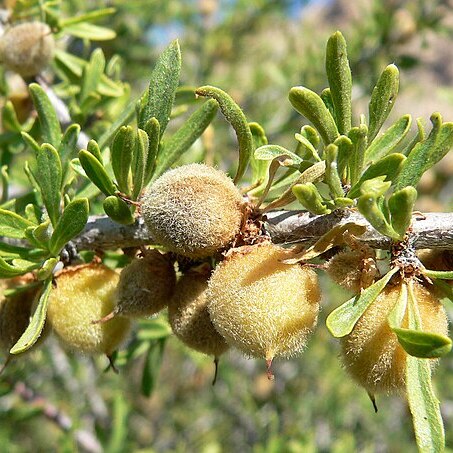Shrubs, suckering, ?much branched?, 10–20(–30) dm, thorny. Twigs with axillary end buds, glabrous or canescent. Leaves deciduous; sessile; blade oblanceolate to linear, 0.5–2 × 0.1–0.2(–0.4) cm, base long-attenuate, margins nearly entire or obscurely and remotely serrulate in distal 1/3, teeth blunt to sharp, sometimes glandular, apex rounded to acute, surfaces puberulent or glabrous or low-papillate (var. punctata). Inflorescences solitary flowers or 2-flowered fascicles. Pedicels 0–4 mm, glabrous. Flowers ?unisexual, plants dioecious?, blooming at leaf emergence; hypanthium campanulate, 1.5–3 mm, glabrous externally; sepals erect-spreading, triangular, 0.7–1 mm, margins entire, surfaces glabrous; petals white to yellowish, elliptic, obovate, or suborbiculate, 1.4–2.5(–4) mm; ovaries hairy. Drupes gray to red-brown, ovoid, ?± compressed?, 7–15 mm, densely puberulent; ?hypanthium tardily deciduous?; mesocarps leathery to dry; stones ovoid, ± flattened.
More
A shrub. It grows 1.8-3 m high and spreads 2 m wide. It loses its leaves during the year. It has many branches from a central trunk. The leaves are small. The flowers are small and white. They are in clusters. The fruit are felted and brown. They are 12 mm wide.
Dry slopes and washes, 750-2000 metres in California. Sandy or gravelly washes, dry mountain slopes, desert scrub, coastal scrub, pinyon-juniper-Joshua tree woodlands, oak woodlands; at elevations from 200-2,100 metres.
More
Temperate. It grows in arid places. It suits hardiness zones 7-10.


